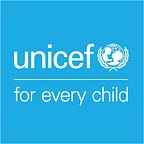30 January 2018
Water under fire
In eastern Ukraine, conflict threatens the water supply to millions of people
Four years into the crisis, armed conflict in eastern Ukraine is inflicting a devastating humanitarian toll, with 3.4 million people in need of assistance and protection. Along the contact line, which divides government and non-government controlled areas and where fighting is most intense, the supply of water to residents is sporadic and disproportionately impacts children, women and the elderly.
Aleksey, 14, who was injured when a grenade plug he found exploded in his hand lives near the contact line in Vozdvyzhenka. For the past two years, there has been no water, electricity or gas at his home — conflict has made it harder for many to earn a living because there are fewer jobs.
During active shelling and gunfire, Alexander Semeniuta (right) and his wife Marina collect water from a well in Avdiivka, a city of about 35,000 people which sits right on the contact line. Running water to homes is sporadic, leaving many residents no choice but to queue for hours at the well.
In nearby Toretsk, Ivan Morhun, 23, the eldest of nine children, carries empty containers to fetch water from a local spring. Ivan’s family have experienced prolonged periods when they have no water due to pipes leading to their town being damaged in fighting.
An unexploded mortar shell lies in the backyard of a home near Avdiivka, a town sitting on the contact line, dividing the government and non-government controlled areas. Since April 2014, more than 2,500 civilian men, women and children have been killed and another 9,000 injured.
People walk outside a residential building destroyed by shelling in Mariinka, where shelling and gunfire are reported on an almost daily basis by local residents.
Sasha Sechevoi, 12, pulls down his sock to show a wound left by a bullet which shattered his ankle as he rode his bike in August 2016 in Avdiivka. Like many other children along the contact line, Sasha can distinguish what weapons are being used based on the sound they make.
“When there is no water, there is no heating” says Yuri Zelensky, who maintains pipes and pumps at the main water pumping station in Toretsk. Even when there is shelling, Yuri is undeterred from doing his job, which he feels provides a vital service for the people of the region.
Workers repair underground water pipes in Toretsk. Life-saving water and electricity installations were subject to continuous interruption in 2017, as civilian infrastructure has frequently been shelled, affecting more than three million people on both sides of the contact line.
The disruption of critical infrastructure in settlements along the contact line is becoming the daily ‘normal’ for millions of people. At the main water pumping station in Toretsk, Yuri Zelensky walks past old water pipes.
At the Voda Donbasa water utility in Avdiivka, an employee stands by a pile of coal unintentionally set on fire. Workers at the plant said the building and area around it had been hit at least twenty times in fighting.
A repair crew move pipes used for water at the Voda Donbasa water utility. The brigade regularly make emergency repairs to water pipes, often in freezing conditions and under shelling.
Anatoli Sotnikov, a worker at the Voda Donbasa water utility, welds pieces of steel from an old water pipe in order to reuse them, behind the water filtration plant in Avdiivka. Opposing sides face off at just 300 meters in some areas of the city, resulting in regular small-arms skirmishes.
UNICEF works with water companies to provide emergency assistance and carry out critical repairs and upgrades. When repairs to water systems cannot be completed, piped water systems can break at critical locations, leaving millions without clean water or centralized heating in the winter months.
Read more about UNICEF’s Humanitarian Action for Children in 2018.
